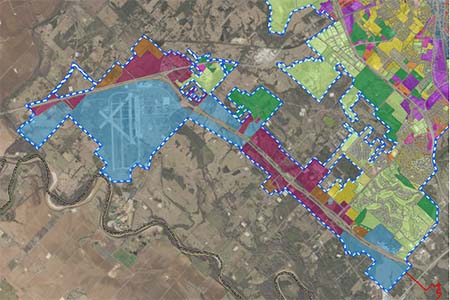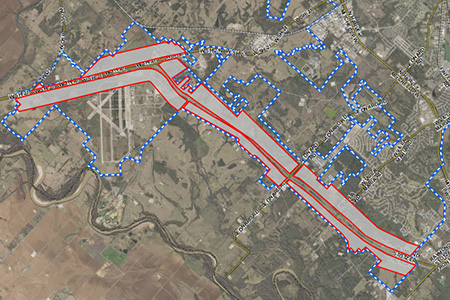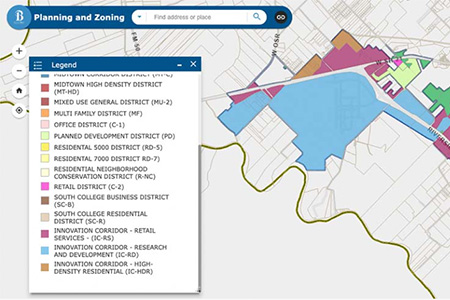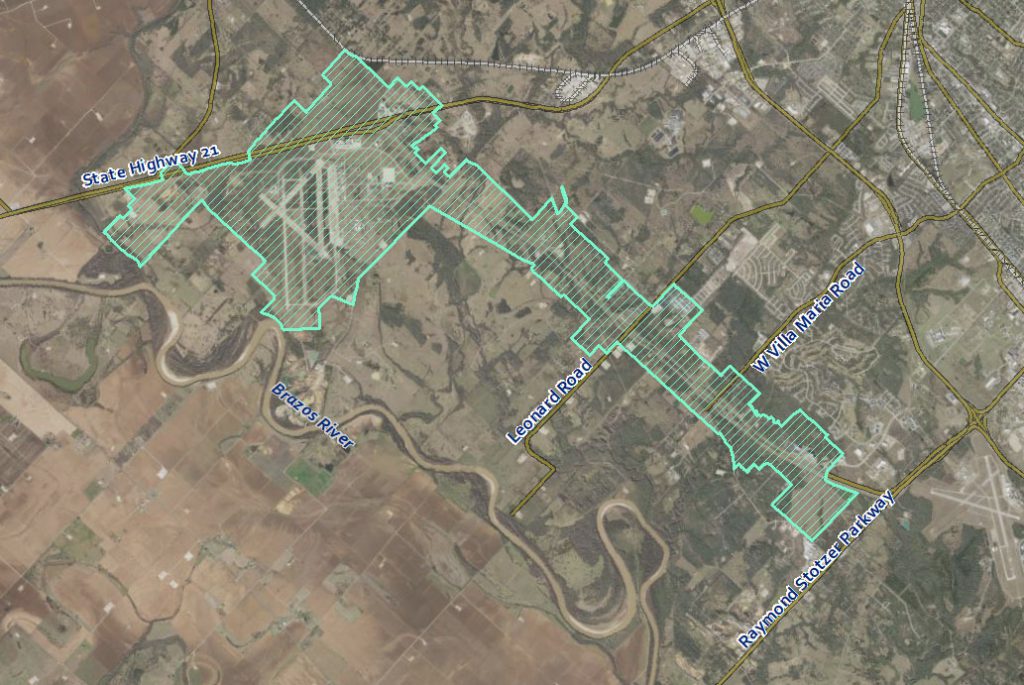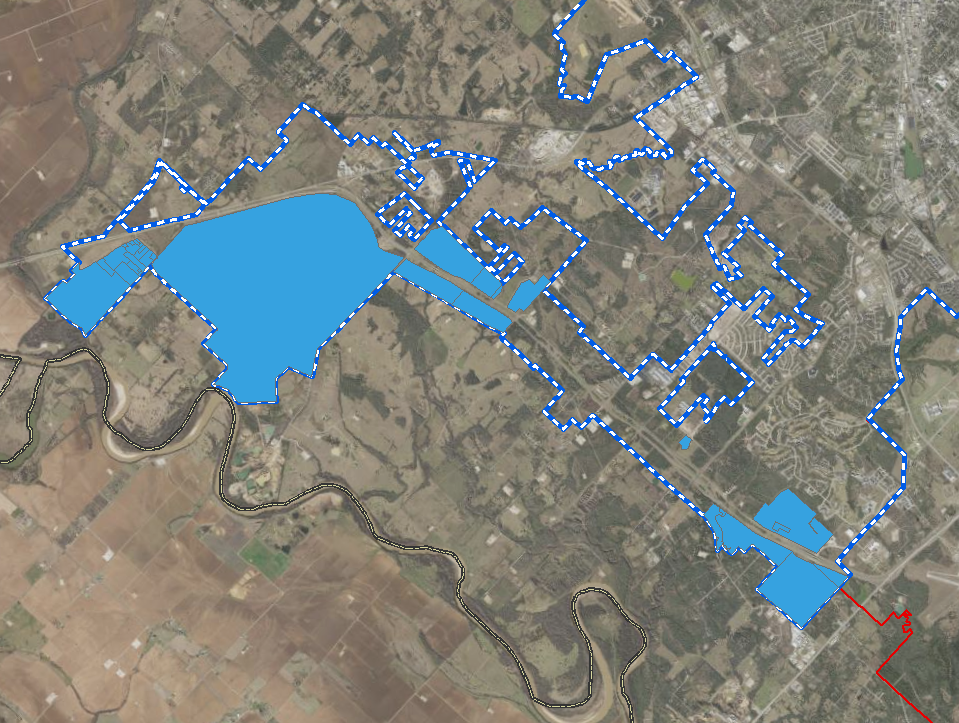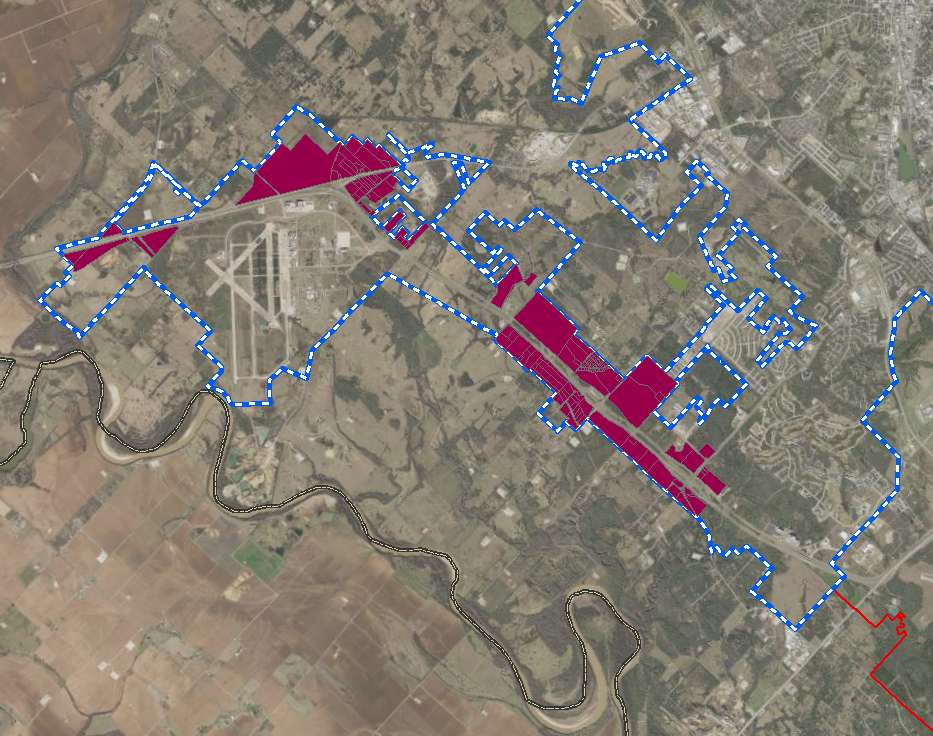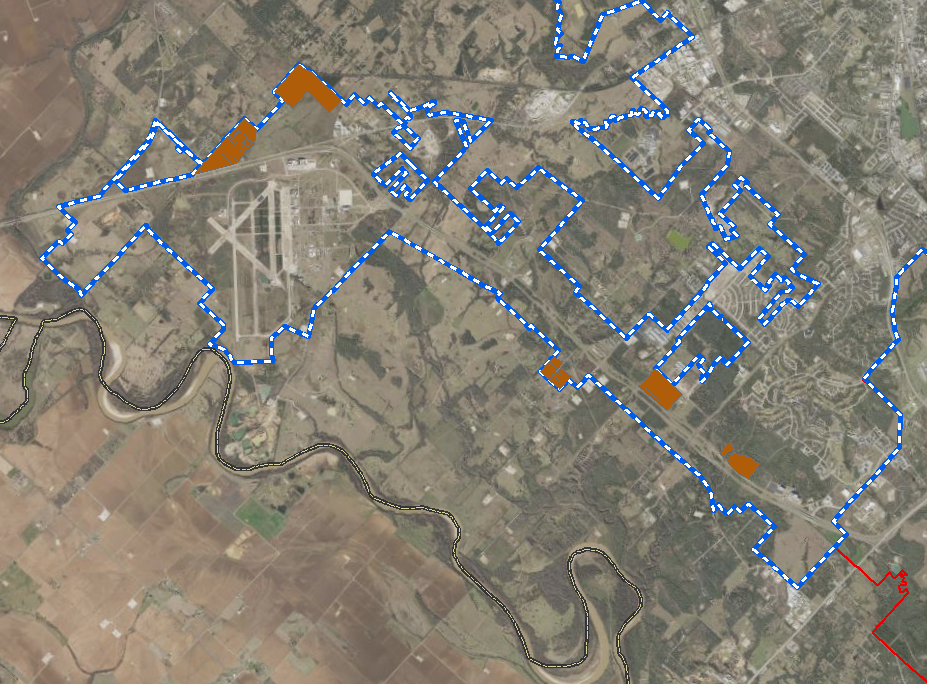Innovation Corridor
What is the Innovation Corridor?
The City of Bryan has identified the Innovation Corridor as an area that, subsequent to very substantial public investment in infrastructure, will be ready for growth.
As envisioned within the last three comprehensive plans, it is reasonable to plan for and encourage high‐quality development featuring first‐class urban amenities and a connected transportation network along the IC.
The purpose of the IC zoning, and the accompanying overlay and development standards, is twofold:
- To ensure future development of urban amenities are on par with existing development on the anchor ends of the corridor.
- To promote the vision the city has described in previous plans.
The Innovation Corridor establishes high quality standards, allows for connectivity between parcels and prioritizes the preservation of the natural landscape.
Hwy. 47: History of the Corridor
Started in 1987 and completed in August of 1996, State Highway 47 was a joint venture between the Texas Department of Transportation and Texas A&M University, to allow for a shortened route to the A&M campus for travelers coming from the west via State Highway 21. In the summer of 1999, the City of Bryan annexed State Highway 47 from the College Station city limits northwest to Old Goodson Bend Road.
This six‐mile long major thoroughfare now serves as the western‐most boundary for the City of Bryan and as soon as a number of long-term, very substantial public investments in infrastructure are complete, will be a premier market for development.
Innovation Corridor Zoning Districts
Research and Development District (IC‐RD)
The IC-RD, Innovation Corridor – Research and Development district is intended to be composed of offices and research buildings that support the RELLIS and Health and Sciences campus environments. Within the Innovation Corridor, these two innovative, collaborative, mixed-use campuses have been established and will continue to attract new commercial activity and enhance the City’s image as a desirable place to live work and shop within the State Highway 21 and 47 corridors.
RELLIS Campus builds upon, complements and supports the strengths of the A&M System and is on its way to becoming one of the nation’s leading “smart” collaborative innovation and research clusters. Buildings and structures in this district should strive for architectural compatibility with this existing private development while providing urban amenities and a connected transportation network.
Retail Services District (IC‐RS)
The IC-RS, Innovation Corridor – Retail and Services district is established to provide locations for various types of general retail trade, business and service uses, but is not intended to be equated with the regional retail policies outlined by the Future Land Use Plan. The district allows shopping areas or uses which are generally compatible near or adjacent to, but not usually directly in, campus environments. Per the Southwest Bryan Highest and Best Use Study, this corridor could become the new connecting link among RELLIS, HSC and the main A&M Campus. In response, the corridor’s overall design concept should be elevated to the importance it holds in providing and enhancing the potential physical, social and aesthetic connections to TAMU campus sites and the City of Bryan. Industrial uses, for example, storage of raw materials, lumberyard or asphalt batching plant shall be prohibited.
High‐Density Residential District (IC‐HDR)
Innovation Corridor Overlay District
An overlay district is a way for communities to apply area-specific standards or conditions on development. It creates a special zoning district, which is laid over the top of a base zoning district. The benefit of overlay districts is that they provide additional protection for defined areas and allow existing zoning regulations to be complemented in order to solve or prevent a threat to the success of the corridor.
An overlay district has been in effect for the State Highway 47 Corridor since 2002. The Innovation Corridor Overlay District expands on the existing boundary and regulations. For a full list of Innovation Corridor Overlay District standards, click here and here.
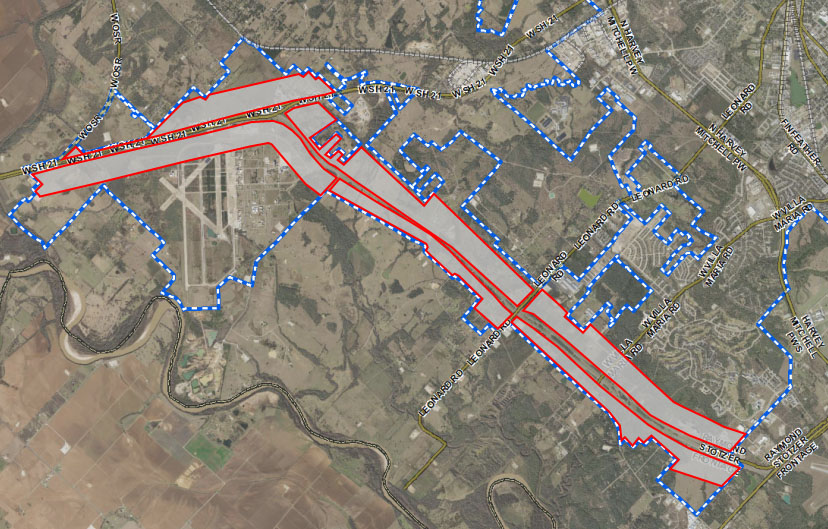
This district is limited to specified areas encompassing land that has already been assigned conventional zoning district classifications. It supplements the standards of the underlying conventional districts with new or different standards, which may be more restrictive. These high-quality standards prioritize the preservation of the natural landscape while encouraging the development of high-quality urban amenities and a connected transportation network in order to ensure high-functioning growth and development along two major growth corridors (State Highway 47 and State Highway 21) in Bryan.
Still Have Questions?
For more information on the Innovation Corridor, please contact the Bryan Planning and Development Services Department at (979) 209-5030, or by email at planning@bryantx.gov.
